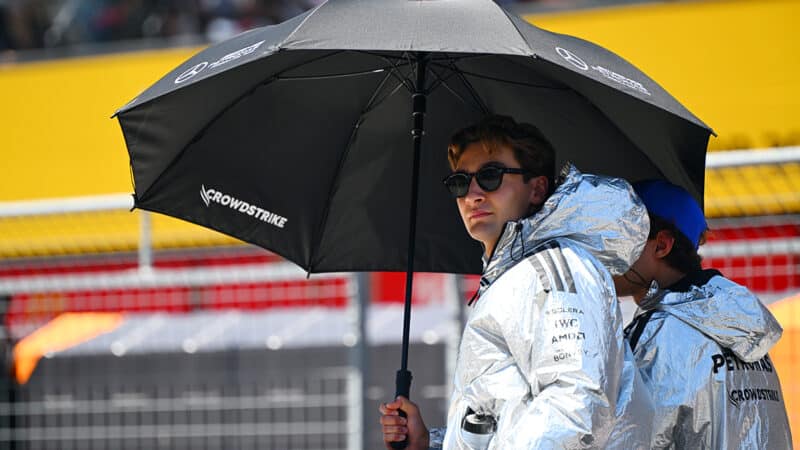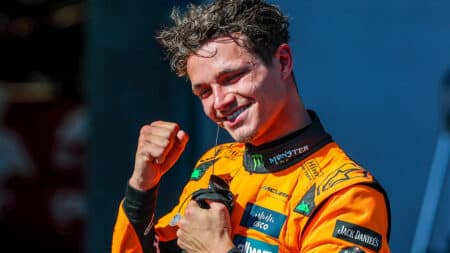In Saturday’s Formula 2 sprint race, a scary incident on the second lap saw Trident driver Sami Meguetounif launched into the air after tyre-on-tyre contact with Arvid Lindblad at Turn 3, barrel rolling over Luke Browning’s car before coming to rest upside down in the middle of the track. The clean-up job was a big one and a red flag thrown, but the race ran clean when it restarted and there were 40 seconds left on the clock when the penultimate lap began.
That meant the race went the full distance, but then on the final lap, four cars were caught in an incident at Turn 3 again after Amaury Cordeel spun, leading to a challenging situation to untangle. Given how late in the race window this had happened, it ultimately led to a short delay starting F1 qualifying.
Then on Sunday morning, the F2 feature race saw another late crash – again at Turn 3 and again involving Lindblad – but the ensuing delay came from a knock-on incident. A recovery truck taking one of the damaged cars away hit an advertising structure across the track and brought it crashing down, leading to another major clear-up operation and another delay to the following event – this time the Porsche Supercup race that had to be squeezed into a 17-minute sprint.
It was a number of unusual occurrences that added up, but it shows they can happen, and why contingency has to be built into the schedule. With F1 adding F4 to the race program this coming weekend at Silverstone, don’t underestimate the commitment and execution required to fit in multiple races both safely and fairly in a sporting sense.
Optics at dinner
A dinner might not seem like the most significant occasion of a race weekend, but there was one that sent out a particular message on Thursday evening.
Just one day after Carlos Sainz Sr announced he would not be running for FIA president in this year’s elections, the FIA made the Driving Standards Guidelines and the Penalty Guidelines publicly available, in an attempt to improve transparency in decision-making.
A few drivers suggested the reasoning seemed strange, as these guidelines were not hidden from them or their teams, and and felt it could have been an obvious ploy from Mohammed Ben Sulayem to improve optics around his presidency having seen one challenger fall by the wayside.
Stefano’s dinner for the drivers! ❤️ #AustrianGP #F1 pic.twitter.com/eWJGthhVxt
— Formula 1 (@F1) June 26, 2025
But if that was deemed obvious, even more so was what followed when 19 of the 20 drivers joined F1 president and CEO Stefano Domenicali for dinner in the paddock. Lance Stroll was the only absentee, but there was also GPDA representation and an image was soon posted on social media, as well as video clips later in the weekend.
It was a clear display of the relationship between Domenicali and the current drivers, in contrast to the difficult one that many have had with the FIA in recent years. It wasn’t subtle, and I doubt it will have gone unnoticed by Ben Sulayem.




